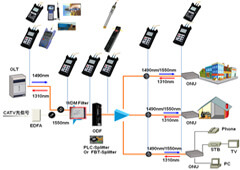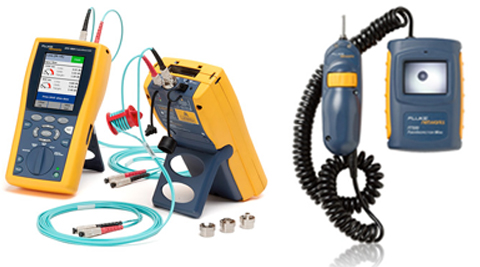What makes fibre testing equipment vital in food applications?
Checking Out Advanced Techniques in Fiber Measurement and Their Industry Impact
In today's fabric market, precise fiber dimension is crucial for optimizing manufacturing procedures and conference sustainability objectives. With the surge of cutting-edge imaging and analytical tools, you can acquire deeper insights into fiber structure and structure. This shift not only enhances efficiency but also aligns with market requirements. As these advanced techniques develop, you might wonder just how they can further change making methods and impact the future of fabrics.
The Significance of Accurate Fiber Measurement in Textile Manufacturing

Cutting-edge Imaging Technologies for Fiber Evaluation
When it involves fiber evaluation, cutting-edge imaging technologies are video game changers. High-resolution microscopy strategies and spectroscopic evaluation techniques give you with detailed understandings right into fiber structure and structure. These developments not just improve accuracy however also improve your measurement procedures.
High-Resolution Microscopy Techniques
High-resolution microscopy strategies have actually reinvented fiber analysis, allowing scientists to picture fibers at unmatched degrees of detail. With methods like scanning electron microscopy (SEM) and transmission electron microscopy (TEM), you can observe fiber morphology, surface area functions, and cross-sections with amazing clarity. These techniques allow you to compare different fiber kinds and analyze their architectural stability. You'll find that high-resolution imaging aids determine defects, incorporations, and various other critical features that can influence material efficiency. Advancements in electronic imaging software program have actually enhanced picture handling, making it simpler to analyze and translate data. By taking on these innovative strategies, you can drive higher precision in fiber dimension and add to innovations in numerous sectors, from textiles to compounds.
Spectroscopic Evaluation Methods
Spectroscopic analysis approaches have emerged as effective tools for fiber characterization, providing insights that match high-resolution microscopy. You can utilize methods like infrared (IR) spectroscopy, which aids identify the chemical structure of fibers by gauging molecular vibrations. Raman spectroscopy offers an additional layer of information, allowing you to evaluate molecular frameworks via scattering of monochromatic light. These techniques not just boost your understanding of fiber residential or commercial properties however additionally make it possible for the detection of pollutants and structural variants. By incorporating spectroscopic methods with conventional microscopy, you get a much more considerable view of fibers' physical and chemical qualities, enhancing your study precision. Inevitably, these technologies can notably impact material selection and quality assurance in numerous sectors.
Advanced Analytical Devices and Their Applications
As you discover the domain name of fiber dimension, you'll uncover that innovative logical devices play an essential role in enhancing accuracy and effectiveness. Methods like high-performance liquid chromatography (HPLC) and gas chromatography (GC) allow you to evaluate fiber composition with impressive accuracy. These tools enable you to identify specific parts and impurities, guaranteeing quality assurance in your products.Additionally, using scanning electron microscopy (SEM) gives you a detailed sight of fiber framework, aiding you recognize exactly how different treatments influence efficiency. Modern software application also streamlines information analysis, making it easier to analyze complex results and collaborate across teams.

Influence of Fiber Measurement on Production Performance
While precise fiber measurement may appear like a small detail, it substantially impacts manufacturing efficiency in the textile market. When you invest in accurate fiber get more measurement strategies, you can enhance raw product usage and minimize waste. This results in far better resource allowance, permitting you to produce premium textiles without overusing resources.By understanding fiber attributes, you can customize manufacturing procedures to specific materials, improving your operations and minimizing downtime. For example, knowing the exact tensile strength of fibers lets you adjust machinery settings for maximum performance. This not just speeds up production but also guarantees consistent product quality.Moreover, accurate fiber measurement helps you recognize concerns early in the manufacturing line, protecting against pricey reworks and hold-ups (fibre testing equipment). Generally, implementing advanced fiber measurement techniques streamlines operations, boosts efficiency, and inevitably raises productivity. In today's affordable market, every information counts, and exact fiber dimension is a game-changer
Sustainability Considerations in Fiber Assessment Techniques
When you analyze fiber, it's necessary to ponder lasting techniques that can lessen environmental effect. Utilizing eco-friendly measurement approaches and minimizing waste in your assessments can substantially improve your overall sustainability. Additionally, incorporating lifecycle evaluation into your strategies can supply a clearer photo of your fiber's environmental footprint.
Eco-Friendly Measurement Approaches
Thinking about the expanding demand for sustainability in various markets, adopting eco-friendly dimension methods for fiber analysis has become important. You can start by using non-toxic solvents and biodegradable materials in your screening procedures. These choices not only lower environmental effect but also improve safety and security for your group. Carrying out electronic measurement strategies can additionally minimize waste, as they commonly require fewer physical examples and sources. Furthermore, leveraging cutting-edge technologies like near-infrared spectroscopy can produce exact outcomes without damaging chemicals. By selecting these greener methods, you add to a much more lasting future while maintaining high requirements in fiber top quality. Eventually, incorporating environment-friendly techniques into your fiber assessment not only lines up with consumer worths yet also increases your brand's online reputation.
Reducing Waste in Analysis
To efficiently decrease waste in fiber evaluation, you can carry out approaches that simplify your screening processes and reduce resource usage. Begin by enhancing example sizes; using smaller samples can yield accurate results while conserving products. Next, purchase multifunctional devices that enables numerous examinations without needing several tools, decreasing power and source use. You ought to additionally consider adopting digital devices for information collection and evaluation, which can reduce paper waste and improve efficiency. On a regular basis educating your team on sustainable practices assures everyone's on board with waste decrease objectives. Teaming up with distributors who prioritize sustainability can better improve your efforts, permitting you to examine fibers while preserving a commitment to ecological duty.
Lifecycle Evaluation Integration
Integrating lifecycle evaluation (LCA) into fiber assessment methods can greatly improve sustainability initiatives. By analyzing the ecological impacts of fibers from manufacturing to disposal, you can recognize areas for enhancement. This strategy helps you comprehend source usage, power use, and waste generation throughout the fiber's life.When you integrate LCA, you're not just determining fiber characteristics; you're likewise taking into consideration the environmental impact. This holistic view enables you to make educated choices that focus on sustainability. You might select fibers that call for less sources or have a lower carbon impact. Ultimately, LCA equips you to maximize procedures, reduce waste, and promote eco-friendly choices in fiber production, straightening your experiment international sustainability objectives.
Industry Specifications and Rules Forming Fiber Measurement
As the demand for premium fiber items expands, comprehending the industry requirements and guidelines that regulate fiber dimension ends up being necessary. These standards assure consistency, accuracy, and safety in the measurement process, which ultimately impacts item high quality. Organizations like ASTM International and ISO set forth requirements that makers need to stick to, covering different elements such as fiber recognition, stamina screening, and wetness material analysis.

Future Trends in Fiber Measurement and Textile Production
Exactly how will innovations in technology reshape fiber dimension and textile manufacturing? You'll see a change toward automation and real-time information analysis, boosting accuracy and performance. Smart sensors will certainly keep track of fiber residential or commercial properties continuously, permitting immediate modifications in manufacturing. This implies you can anticipate better fabrics with much less waste.Moreover, AI and equipment knowing will certainly predict patterns in customer preferences, making it possible for manufacturers to adapt promptly. optical measurement system. By incorporating blockchain technology, you'll have far better traceability of materials, ensuring sustainability and honest sourcing.Virtual truth and this content boosted reality will contribute too, using immersive training experiences for employees on fiber handling and manufacturing processes.As you embrace these Read Full Article modifications, the fabric sector will certainly transform into a much more receptive, lasting, and cutting-edge sector, setting new requirements for top quality and efficiency. The future of fiber dimension and fabric production is intense, and it's time to get on board
Frequently Asked Concerns
What Are one of the most Usual Fiber Types Measured in the Industry?
In the industry, you'll frequently come across all-natural fibers like cotton and woollen, in addition to synthetic options such as polyester and nylon. Each kind has special homes, impacting their measurement and application in numerous products.
Exactly How Do Fiber Dimensions Affect Consumer Product High Quality?
Fiber measurements directly influence consumer item high quality by ensuring uniformity, resilience, and efficiency. When you comprehend these metrics, you can make enlightened options, bring about boosted fulfillment and much better total experiences with the items you utilize.
What Training Is Required for Fiber Dimension Technicians?
To become a fiber measurement service technician, you'll require specific training in textile scientific research, measurement methods, and tools procedure. Hands-on experience and qualifications can improve your skills, making you competent in precise fiber evaluation and high quality guarantee.
Are There Any Type Of Certifications for Fiber Measurement Professionals?
Yes, there are qualifications for fiber dimension experts. You can pursue options like the Certified Fiber Optics Professional (CFOT) or various industry-specific credentials that improve your know-how and credibility in fiber dimension and testing.
Just How Can Small Companies Implement Fiber Measurement Techniques Properly?
You can implement fiber dimension techniques successfully by spending in budget-friendly devices, educating your team, and establishing clear procedures. Work together with sector experts and continually fine-tune your processes to improve accuracy and effectiveness with time.